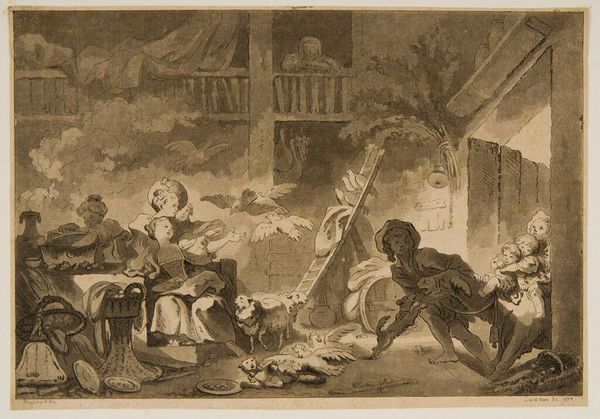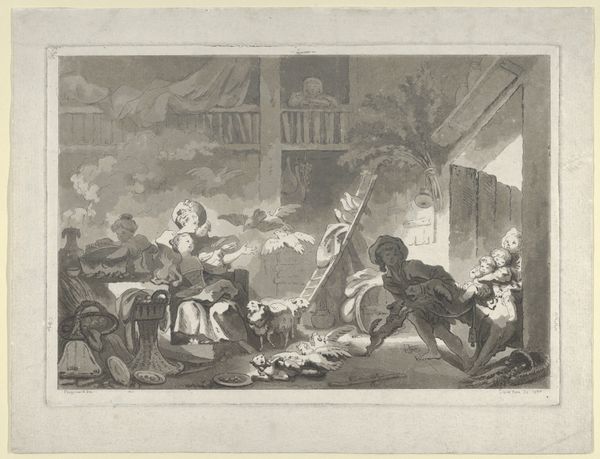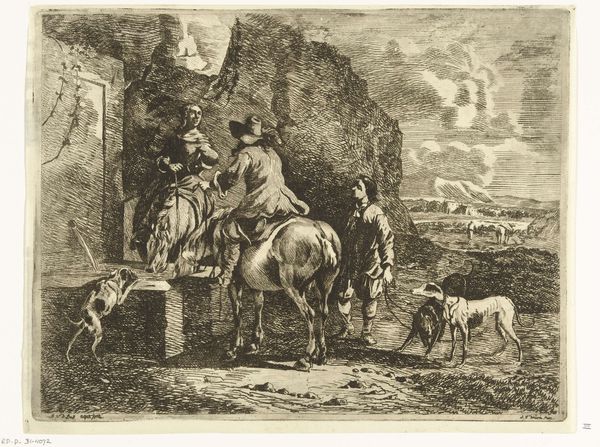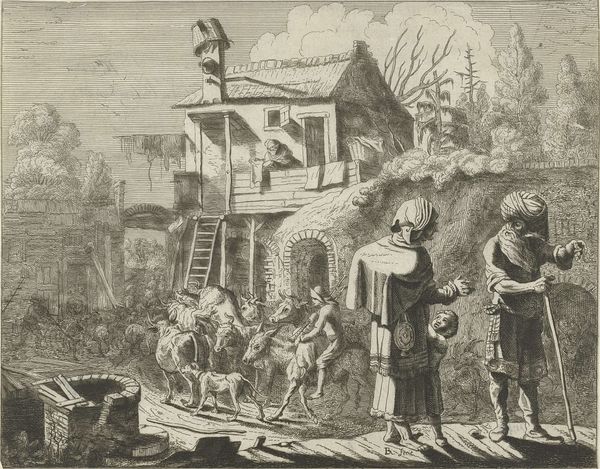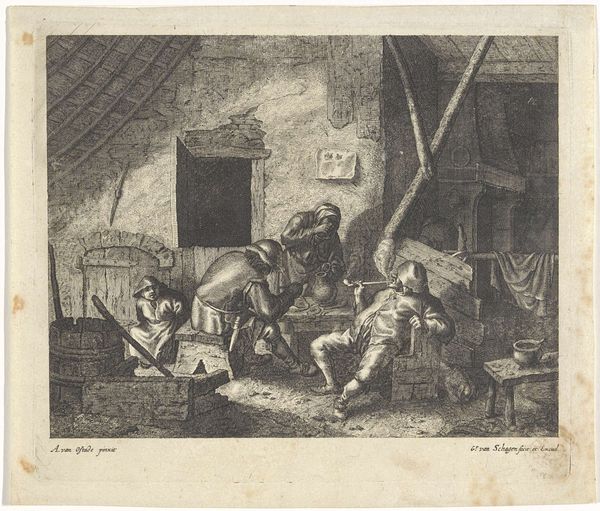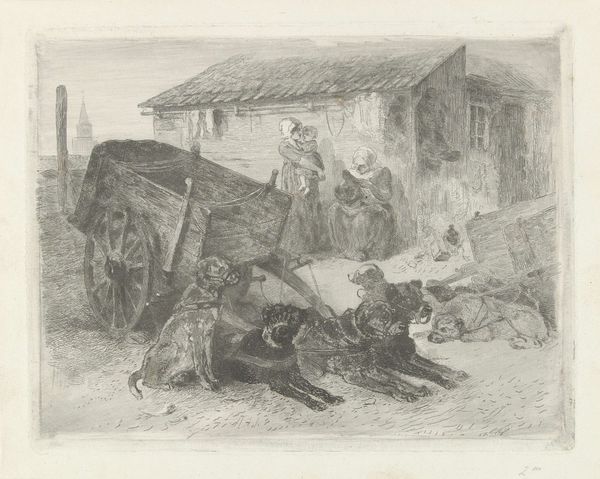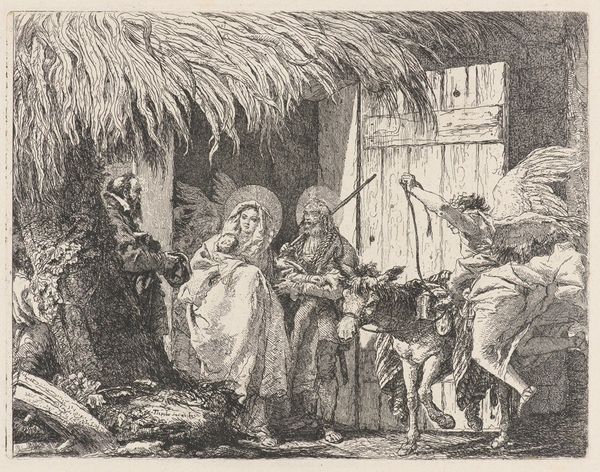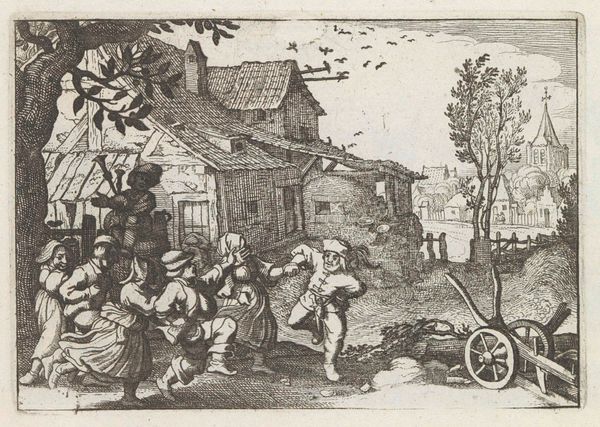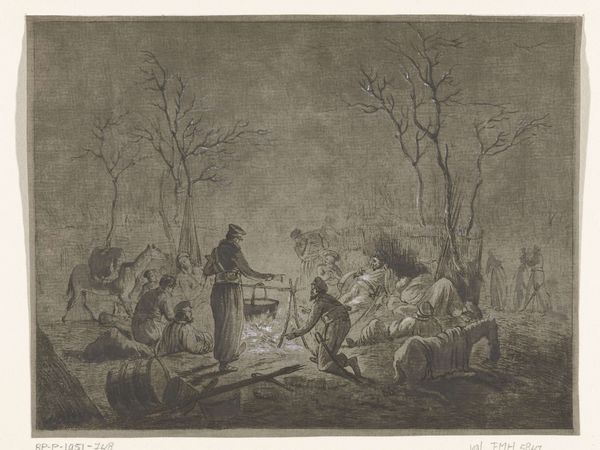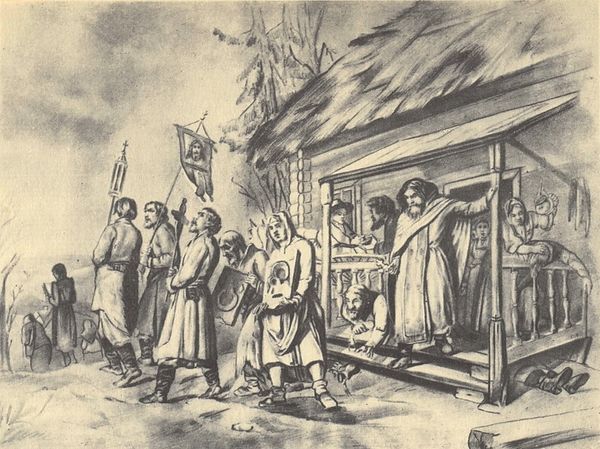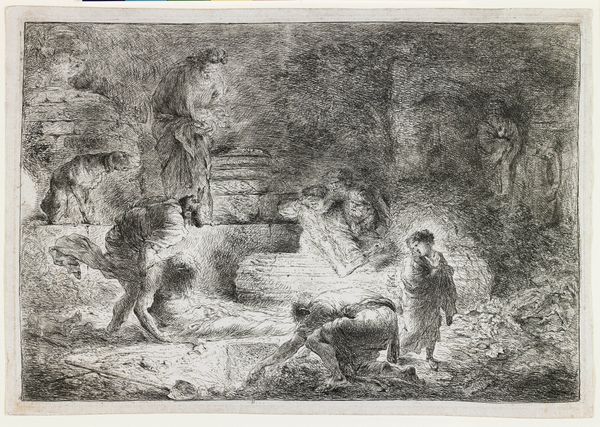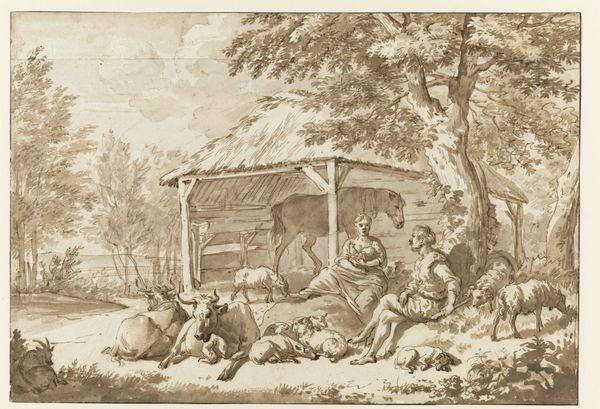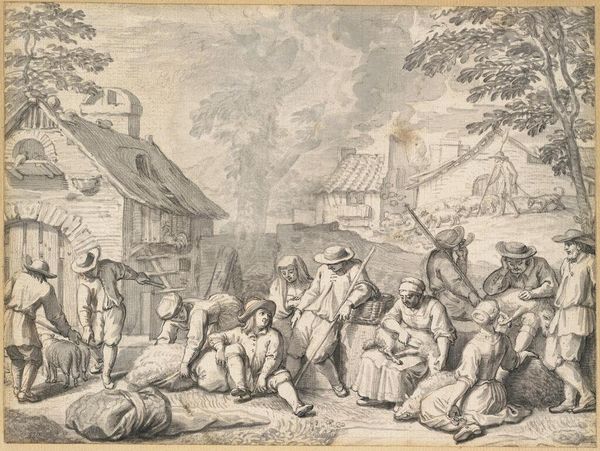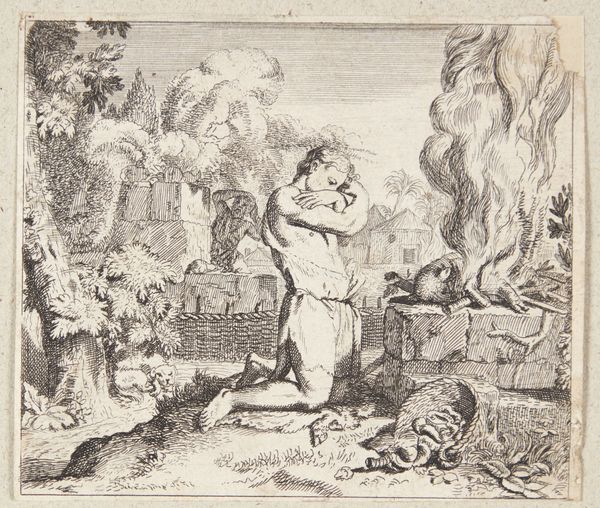
drawing, print, etching
#
drawing
#
animal
# print
#
etching
#
landscape
#
genre-painting
#
rococo
Dimensions: sheet: 8 1/16 x 11 5/16 in. (20.4 x 28.8 cm) image: 7 3/16 x 10 1/2 in. (18.3 x 26.7 cm)
Copyright: Public Domain
Curator: Oh my, the busyness! "La Cour de Ferme," or "The Farmyard," etched by Jean Claude Richard, Abbé de Saint-Non in 1762, is absolutely teeming with life. Editor: Indeed! Even with this relatively restricted palette of black and white, a dynamism bursts forth, with every texture seemingly defined by subtle shifts in tone and intensity of line work. The balance in the composition, especially regarding the placement of people within it, guides the eye and feels classically structured. Curator: Let’s place this work in its context. The Abbé, while not as widely known today, was a significant figure in the 18th century. A nobleman who also had ties to the church who avidly pursued printmaking in the Rococo style, capturing everyday life but often filtered through a lens of aristocratic sensibility. What we're viewing, then, becomes a complex study in class and artistic expression, wouldn’t you say? Editor: Absolutely. And looking at this specific work more closely, it looks to have been rendered in at least two layers: background architectural detailing that then comes forward via figuration in the people inhabiting it. I wonder what, formally speaking, was the Abbé’s conceptual framework when composing? Curator: The "everyday" he's portraying here excludes a substantial portion of society who are systematically disenfranchised. What can this work tell us about access, or lack thereof, to material and societal structures in the 18th century? Is this representation truthful or biased? Editor: Well, focusing simply on the arrangement of space: high and low, inside and outside are also important components. Even within such a clearly circumscribed area, Saint-Non makes the effort to create and explore separate spheres within. The eye doesn’t linger in one area. Curator: Given our contemporary perspectives and commitments to art reflecting the concerns of every segment of society, how do we position these works which often seem unconcerned with parity? How can institutions navigate these complicated considerations without completely canceling out entire swaths of artwork from our past? Editor: Ultimately it rests on our perspective as observers. Rather than judge by standards so many years distant from then, it’s more insightful to study the artistic toolbox Saint-Non deploys and the technical skills involved. What kind of symbolic value should be applied to any kind of negative space in the visual arrangement? Curator: These dialogues and explorations offer precisely the types of critical assessment that both celebrate the craft of creation, while addressing questions about what it reveals about our values. Editor: And on both macro and micro scales – with sensitivity and critical judgement – may inform viewers productively on the relationship between the composition, materials, and their cultural values and significance.
Comments
No comments
Be the first to comment and join the conversation on the ultimate creative platform.
